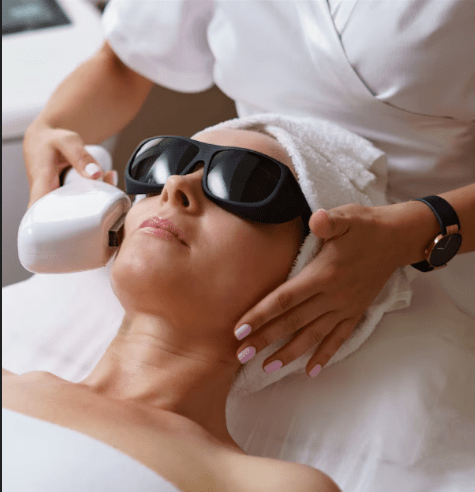Chin implant surgery is known for its high success rate and lasting results. But like any implant procedure, there’s a small chance that things don’t go exactly as planned.
One of the less common complications is implant shifting or malposition, and in some cases, a patient may require implant removal or revision.
If you’re concerned about this possibility — or are currently experiencing discomfort, asymmetry, or unusual changes after surgery — this guide will walk you through what to expect, what causes shifting, and how it can be safely corrected.
🔄 What Does It Mean When a Chin Implant Shifts?
An implant “shift” or “migration” means that the implant has moved from its original position. Instead of sitting flush and centered over the chin bone (mandible), it may slide:
- To one side (lateral displacement)
- Downward (causing a droopy appearance)
- Upward (pushing against the lower lip or creating a “bulge”)
This can result in visible facial asymmetry, discomfort, or a distorted appearance.
🧪 What Causes Chin Implant Shifting?
Several factors can contribute to implant movement, including:
1. Inadequate Implant Pocket
If the surgeon creates a pocket that’s too large or too loose, the implant has room to move post-surgery.
2. Trauma or Pressure During Healing
- Bumping your chin, sleeping face-down, or excessive facial movement in the first few weeks can cause shifting.
- Athletes or highly active individuals are at slightly higher risk.
3. Infection or Seroma
Fluid accumulation or infection around the implant can loosen the surrounding tissue, making the implant more mobile.
4. Incorrect Implant Size or Shape
Using an implant that’s too small or incompatible with your anatomy may make it less stable.
5. Premature Return to Normal Activities
Ignoring post-operative restrictions, such as chewing tough foods or resuming intense workouts too soon, may disrupt implant healing.
🛠️ What Happens If a Chin Implant Shifts?
🔍 1. Assessment by Your Surgeon
If you notice any new asymmetry, discomfort, or swelling weeks after surgery, your first step is to schedule a follow-up with your facial plastic surgeon.
They may:
- Examine your chin manually
- Use imaging (like X-rays or CT scans) to assess the implant’s position
- Determine if the movement is minor (and may resolve on its own) or if surgical correction is needed
🔄 2. Non-Surgical Monitoring (for Mild Cases)
In early or mild cases, your surgeon may recommend:
- Close observation
- Wearing a chin support strap to stabilize the implant
- Modifying your activities temporarily
Sometimes, early swelling can cause the appearance of asymmetry when the implant is still properly placed.
🛠️ 3. Surgical Revision (for Moderate to Severe Cases)
If the implant is significantly off-center, uncomfortable, or visible, a revision procedure may be required.
Surgical Revision May Include:
- Repositioning the existing implant
- Creating a more secure implant pocket
- Replacing the implant with a better-fitting shape or size
- Using sutures or fixation devices to anchor the implant
- In rare cases, removing the implant entirely (especially if infection is present)
🧼 What Happens If the Chin Implant Needs to Be Removed?
Indications for Chin Implant Removal:
- Persistent infection or abscess
- Implant exposure (breaking through the incision site)
- Chronic discomfort or pressure
- Patient dissatisfaction with the aesthetic result
The Removal Process:
- Done under local or general anesthesia
- The surgeon reopens the original incision
- The implant is carefully extracted
- The pocket is cleaned, closed, and allowed to heal
Healing is generally fast, and swelling resolves quickly without the implant in place.
Next Steps After Removal:
- Some patients choose not to replace the implant
- Others opt to have a new implant placed later after full healing (usually in 3–6 months)
- Alternatively, chin fillers or genioplasty (bony chin reshaping) may be considered
🧘 Can Chin Implant Shifting Be Prevented?
Yes — in most cases, implant shifting is entirely preventable by following these best practices:
✅ How to Reduce the Risk:
- Choose a board-certified facial plastic surgeon
- Follow all pre- and post-op instructions
- Avoid pressure on your chin for at least 2–3 weeks
- Sleep on your back with your head elevated
- Avoid chewing tough foods during early recovery
- Don’t resume sports, heavy lifting, or high-impact activity until cleared
🔁 What Are the Chances of Chin Implant Revision?
Chin implant revision is rare. Most studies show a revision or removal rate of less than 5–7%, especially when the surgery is done by a skilled, experienced provider. When a revision is needed, outcomes are usually very favorable.
Final Thoughts
Chin implants are a safe and effective way to improve your facial profile — and implant shifting or removal is uncommon but manageable. If it does occur, you’re not alone, and skilled surgeons can correct the issue with minimal downtime and excellent results.




